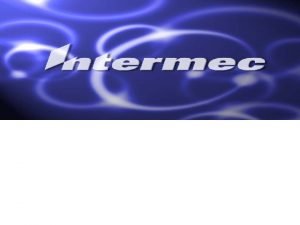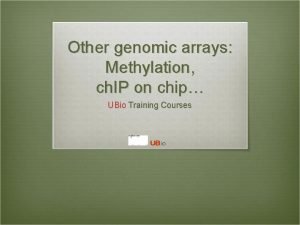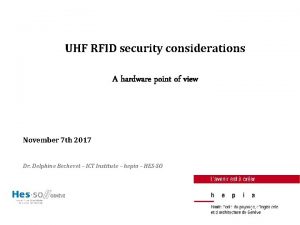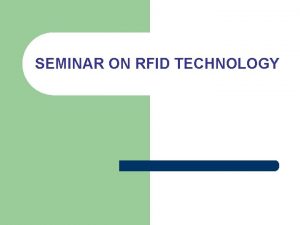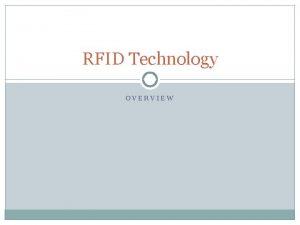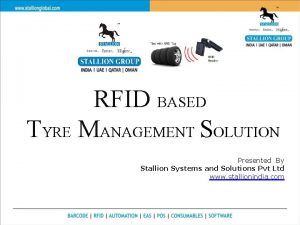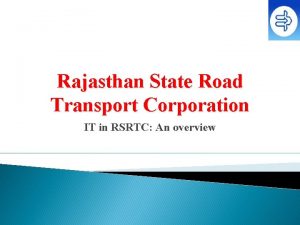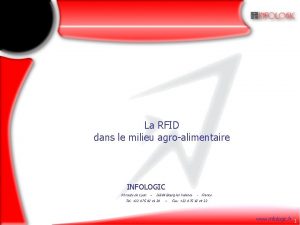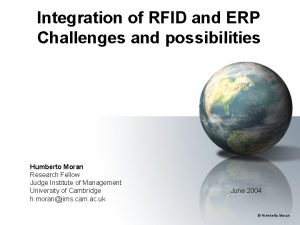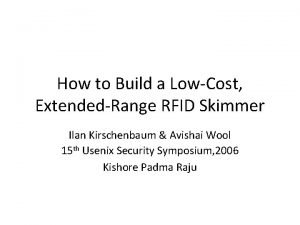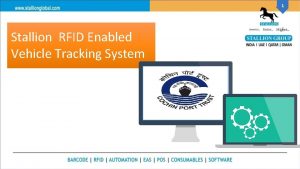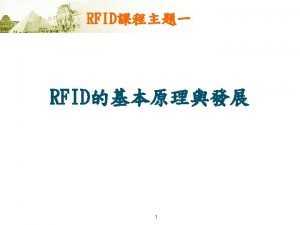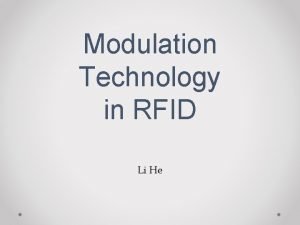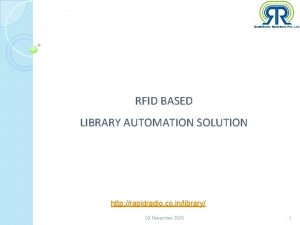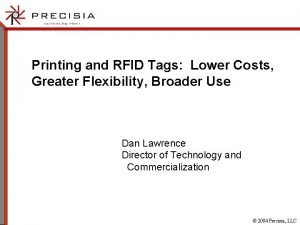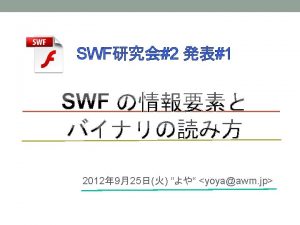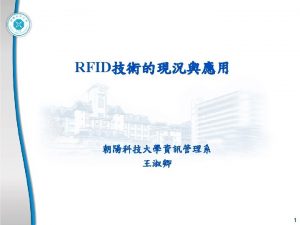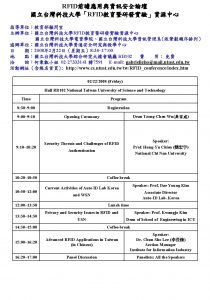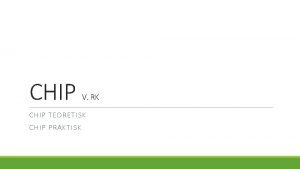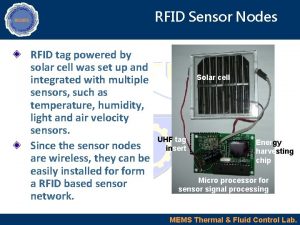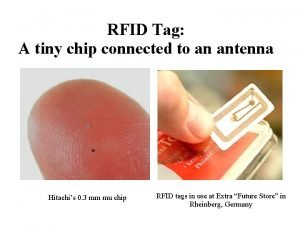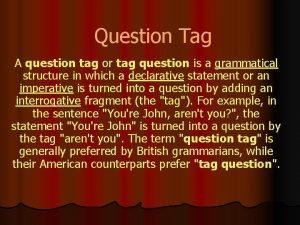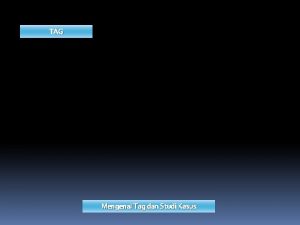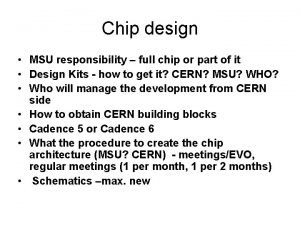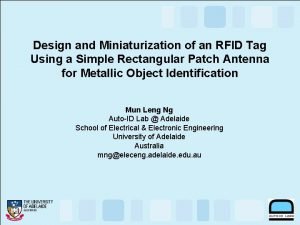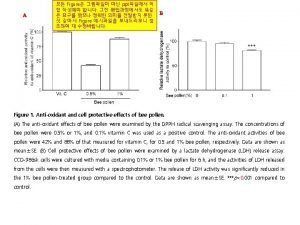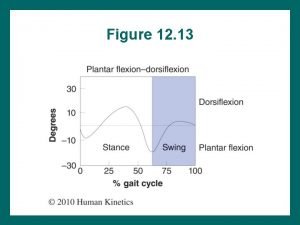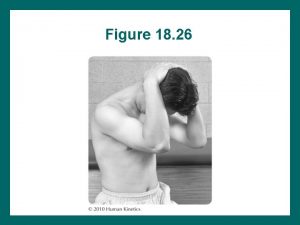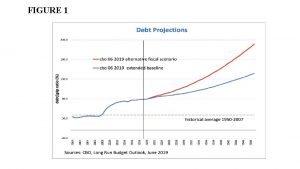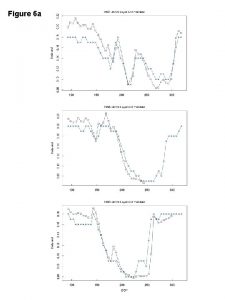Chapter 4 RFID tag chip design Figure 4
























- Slides: 24

Chapter 4 – RFID tag chip design

Figure 4. 1 Tag system architecture

Figure 4. 2 The “frame-sync” sequence of Gen 2 protocol

Figure 4. 3 Multi-level supply voltage generation

Figure 4. 4 An N-stage Dickson charge pump

Figure 4. 5 The factors affecting the power conversion efficiency of the charge pump

Figure 4. 6 Charge pump circuit with self-threshold compensation

Figure 4. 7 Charge pump circuit with constant threshold compensation and substrate shift

Figure 4. 8 Symmetrical charge pump circuit with dynamic threshold compensation

Figure 4. 9 Oscillator based TRNG

Figure 4. 10 Logical memory map (redrawn from ISO 18000 -6 C. )

Figure 4. 11 Basic single-end SPNVM cell structure

Figure 4. 12 Schematic (a) control capacitor Mc and tunneling capacitor Mt (b) cross section

Figure 4. 13 General standard CMOS e. NVM architecture

Figure 4. 14 (a)Voltage-mode sense amplifier (b) Current-mode sense amplifier

Figure 4. 15 Block diagram of RFID tag baseband

Figure 4. 16 Decode Margin for 1. 28 MHz with 5% clock uncertainty (violations marked with the circle)

Figure 4. 17 Decode Margin for 1. 92 MHz with 5% clock uncertainty

Figure 4. 18 BLF error when clock rate is 1. 28 MHz (violations marked with the circle)

Figure 4. 19 BLF error when clock rate is 1. 92 MHz

Figure 4. 20 Clock Gating

Figure 4. 21 Example of adiabatic CMOS circuit (left) versus standard CMOS Logic (right)

Figure 4. 22 Energy dissipation in the adiabatic circuit

Figure 4. 23 The different package of on-chip antenna and tag chip
 Robert cook
Robert cook Methylation & chip-on-chip microarray platform
Methylation & chip-on-chip microarray platform Snap crackle pop pick up line
Snap crackle pop pick up line Jeden morgen beginnt ein neuer tag
Jeden morgen beginnt ein neuer tag Guten tag hallo wie geht's
Guten tag hallo wie geht's Rfid antenna
Rfid antenna Rfid technology seminar
Rfid technology seminar Rfid technology overview
Rfid technology overview Rfid tyre management system
Rfid tyre management system Rfid card status rsrtc
Rfid card status rsrtc Rfid agroalimentaire
Rfid agroalimentaire Jims erp
Jims erp Rfid skimmer
Rfid skimmer Quadrillion on your
Quadrillion on your Rfid vehicle tracking system
Rfid vehicle tracking system Rfid tagsource
Rfid tagsource Isu rfid
Isu rfid Rfid modulation techniques
Rfid modulation techniques Rfid and business intelligence
Rfid and business intelligence Rfid and business intelligence
Rfid and business intelligence Controllo inventory rfid
Controllo inventory rfid Disadvantages of rfid in libraries
Disadvantages of rfid in libraries Rfid in library automation
Rfid in library automation Printable rfid tags cost
Printable rfid tags cost Library automation using rfid
Library automation using rfid
